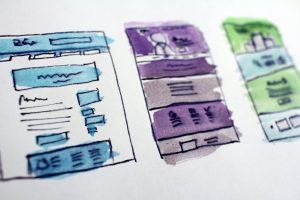Security and privacy are critical considerations in mobile app development, especially from the perspective of the USA, where data protection regulations like the California Consumer Privacy Act (CCPA) and the Health Insurance Portability and Accountability Act (HIPAA) (for healthcare apps) are in place. Here are some key security and privacy measures to consider:
Data Encryption :
Use strong encryption algorithms (e.g., AES-256) to protect data in transit and at rest.
Implement secure communication protocols like HTTPS for data transmission.Authentication and Authorization :
Utilize strong authentication methods, including biometrics, multi-factor authentication (MFA), and OAuth.
Implement role-based access control (RBAC) to restrict access to sensitive data and functionality.Secure Coding Practices :
Follow secure coding guidelines and best practices, such as those provided by OWASP.
Regularly update and patch third-party libraries and frameworks to address known vulnerabilities.Secure Data Storage :
Store sensitive data securely, utilizing technologies like Keychain (iOS) and Keystore (Android) for secure storage.
Avoid storing unnecessary data and use data minimization principles.User Consent and Transparency :
Clearly inform users about data collection practices and obtain their consent.
Offer granular privacy settings, allowing users to control their data.Data Protection Regulations :
Comply with applicable data protection regulations, such as CCPA, GDPR (if applicable), and industry-specific regulations like HIPAA for healthcare apps.
Regular Security Audits and Testing :
Conduct security assessments, penetration testing, and code reviews to identify vulnerabilities.
Implement automated security scanning tools and consider bug bounty programs.Secure APIs :
Ensure that APIs used by your app are secure and require proper authentication and authorization.
Validate input and sanitize data to prevent injection attacks.Data Breach Response Plan :
Develop a clear incident response plan to address data breaches promptly and effectively.
Notify affected users and authorities as required by law.Privacy by Design :
Integrate privacy considerations into the app’s design and development process from the beginning.
Conduct privacy impact assessments to identify and mitigate risks.
What is Mobile App Security?
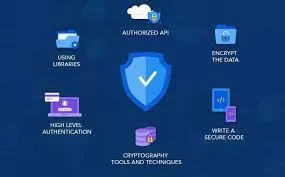
Mobile app security refers to the measures and practices employed to protect mobile applications from various threats and vulnerabilities. It involves safeguarding sensitive user data, preventing unauthorized access, and ensuring the overall integrity and reliability of the app.Key aspects of mobile app security include encryption to protect data in transit and at rest, robust authentication methods, and authorization mechanisms to control access. Secure coding practices are vital to defend against common vulnerabilities like SQL injection and cross-site scripting. Regular security audits and testing help identify and mitigate potential weaknesses.
Data privacy is a significant component, encompassing user consent, transparent data collection, and compliance with data protection regulations. A well-defined incident response plan is crucial to address breaches promptly.Mobile app security is an ongoing process, requiring continuous monitoring and updates to stay ahead of evolving threats. It is essential for maintaining user trust, protecting sensitive information, and ensuring the app’s long-term success in an increasingly digital and interconnected world.
Insufficient mobile app security can have severe consequences
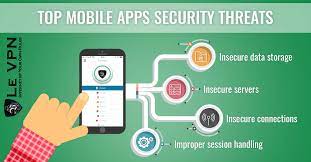
Inadequate mobile app security can lead to severe consequences for both users and organizations. Cybercriminals can exploit vulnerabilities in poorly protected apps, compromising sensitive user data and causing significant harm.One immediate impact is data breaches, which can result in the theft of personal information, financial losses, and identity theft for users. This can lead to legal and financial repercussions for the app developers and operators, including lawsuits, fines, and reputational damage.
Additionally, weak security can facilitate the distribution of malware through apps, potentially infecting users’ devices and enabling cybercriminals to gain unauthorized access. This can lead to further malicious activities, such as unauthorized financial transactions or the use of compromised devices in large-scale botnets for cyberattacks.
Moreover, the erosion of user trust is a long-term consequence of poor mobile app security. Users are less likely to use or recommend an app that has a history of security issues, potentially causing loss of revenue and market share.To mitigate these risks, it is imperative for mobile app developers and organizations to prioritize security throughout the development lifecycle. Regular security assessments, code reviews, and the adoption of best practices are essential to protect both users and their own reputation from the damaging consequences of weak mobile app security.
Effective methods for upholding privacy and security in mobile apps encompass the following approaches
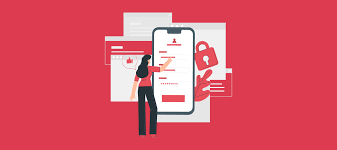
Implementing robust privacy and security measures in mobile apps is imperative to safeguard user data and maintain trust. These essential approaches are vital for achieving these goals.
Data Encryption :
Utilize strong encryption algorithms to protect data both at rest and in transit. This shields sensitive information from unauthorized access, ensuring user privacy. Additionally, employing secure communication protocols, such as HTTPS, is crucial for securing data transmission.
Authentication and Authorization :
Implement stringent authentication methods, such as biometrics or multi-factor authentication (MFA), to verify user identities. Employ role-based access control (RBAC) to restrict access to specific app features and data, ensuring that only authorized users can access sensitive information.
Secure Coding Practices :
Adhere to secure coding guidelines and best practices, like those provided by the Open Web Application Security Project (OWASP). This helps prevent common vulnerabilities, such as SQL injection and cross-site scripting, which can compromise app security.
Regular Security Testing :
Conduct security assessments, penetration testing, and code reviews to proactively identify and address vulnerabilities. Leveraging automated security scanning tools and establishing bug bounty programs can further enhance app security.
Privacy by Design :
Integrate privacy considerations into the app’s design and development from the outset. Perform privacy impact assessments to identify and mitigate risks associated with data collection and processing.
User Education :
Educate users about safe app usage and privacy practices. Provide clear and concise information about data collection and usage, enabling users to make informed choices.
Compliance with Regulations :
Ensure compliance with relevant data protection regulations, such as the General Data Protection Regulation (GDPR) or the California Consumer Privacy Act (CCPA). Adhering to these laws helps avoid legal repercussions and protects user privacy.
Security measures to be taken while developing a mobile application
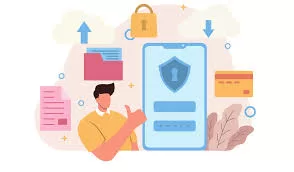
When developing a mobile application, it’s essential to prioritize security measures to protect both user data and the integrity of the app itself. Here are key security measures to take:
Data Encryption :
Implement strong encryption protocols to protect data at rest and during transmission. Use technologies like SSL/TLS for secure communication.
Secure Authentication :
Utilize robust authentication methods, including biometrics, multi-factor authentication (MFA), and OAuth.
Ensure that passwords are stored securely, preferably using salted and hashed algorithms.Authorization Controls :
Implement role-based access control (RBAC) to restrict user access based on their roles and permissions.
Enforce proper authorization checks to ensure users can only access the data and features they are authorized for.Secure Coding Practices :
Adhere to secure coding guidelines and best practices, such as those provided by OWASP, to prevent common vulnerabilities like SQL injection and cross-site scripting.
Regular Security Testing :
Conduct security assessments, penetration testing, and code reviews to identify and remediate vulnerabilities.
Use automated scanning tools to detect security issues.Data Validation and Sanitization :
Validate and sanitize user input to prevent input validation vulnerabilities.
Use parameterized queries to mitigate SQL injection risks.Session Management :
Implement secure session management practices, including session timeouts and token-based authentication.
Data Privacy and Compliance :
Comply with relevant data protection regulations (e.g., GDPR, CCPA) and industry-specific standards (e.g., HIPAA for healthcare apps).
Obtain user consent for data collection and clearly communicate privacy policies.Secure Backend Services :
Ensure that server-side components are also secure and follow best practices for API security.
Protect APIs with strong authentication mechanisms and rate limiting to prevent abuse.Secure Storage :
Store sensitive data securely using platform-specific security features like Keychain (iOS) and Keystore (Android).
Avoid storing unnecessary data.
By following these security measures, you can minimize the risk of security breaches and protect both your users and your app’s reputation. Keep in mind that mobile app security is an ongoing process that requires vigilance and adaptation to emerging threats.
What are the key security considerations in mobile app development?

Security & Privacy considerations in mobile app development include implementing robust authentication mechanisms, securing data at rest and in transit through encryption, and adhering to secure coding practices. Developers must also validate user inputs to prevent injection attacks like SQL injection and ensure proper access controls to restrict unauthorized access.Another crucial aspect is protecting against common vulnerabilities such as Cross-Site Scripting (XSS) and Cross-Site Request Forgery (CSRF) by implementing input validation and output encoding. Additionally, apps should have mechanisms to detect and prevent brute-force attacks, and they should incorporate secure password storage techniques like salting and hashing.
Secure APIs are vital, with proper authentication and authorization mechanisms in place to safeguard data and functionality. Regular security audits and penetration testing should be conducted to identify and mitigate vulnerabilities.Furthermore, mobile apps must address device-specific security concerns, including safeguarding sensitive information like device identifiers, biometric data, and geolocation. Implementing security measures against reverse engineering, code tampering, and root/jailbreak detection is crucial.
In conclusion, a comprehensive approach to mobile app security encompasses multiple layers of protection, from data encryption to secure coding practices and device-specific security measures. Regular updates and proactive monitoring are essential to stay ahead of emerging threats and ensure the ongoing security of mobile applications.
FAQ’S
1. Why is security and privacy important in mobile app development?
Security and privacy are crucial because mobile apps often handle sensitive user data. A breach can result in financial loss, damage to reputation, and legal consequences.
2. How can I secure user data in my mobile app?
Use strong encryption methods like TLS for data transmission and store data securely on the device using encryption libraries. Implement strong authentication mechanisms.
3. How can I prevent data leakage in my mobile app?
Implement proper access controls, avoid hardcoding sensitive data, and regularly audit your app’s code for vulnerabilities.
4. What is two-factor authentication (2FA), and should I implement it in my app?
2FA adds an extra layer of security by requiring users to provide two forms of identification. Implementing 2FA is advisable, especially for apps handling sensitive data.
5. What is a Content Security Policy (CSP), and why is it relevant for mobile app security?
CSP is a security feature that helps prevent cross-site scripting (XSS) attacks. While it’s more commonly used in web apps, it’s relevant in hybrid or web-based mobile apps.











